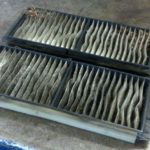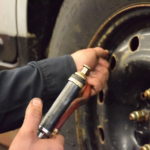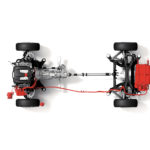It’s getting harder and harder to remember the last time I drove a new car with an engine that didn’t use Direct Injection (DI) technology.
 With proven benefits to efficiency and performance, DI is making its way across the marketplace, putting an extreme-pressure fuel injector inside of the combustion chamber, and unleashing fuel at high-pressure for cooler combustion, higher compression, and numerous other benefits. But how is DI technology panning out in the long term? According to numerous owners of older DI cars, the answer is a dirty one, possibly caked in valve gunk.
With proven benefits to efficiency and performance, DI is making its way across the marketplace, putting an extreme-pressure fuel injector inside of the combustion chamber, and unleashing fuel at high-pressure for cooler combustion, higher compression, and numerous other benefits. But how is DI technology panning out in the long term? According to numerous owners of older DI cars, the answer is a dirty one, possibly caked in valve gunk.
Since no fuel spray is ever in contact with the engine intake valves, gunk and deposit buildup goes unchecked, and no amount of fuel injector or intake system cleaner can remove it, since the valves are never exposed to fuel. Excessive gunk can cause engine stalling, poor performance, and even a loss of compression, if left unchecked. Further, there’s no easy visual inspection possible for valve gunk buildup, without dismantling part of the engine. Translation? The technology works, and it’s flooding the market– but buy with caution.
If you’re shopping for a used car with a DI engine, be sure to have a diagnostic scan, in particular, looking for a ‘MISFIRE’ code, which can indicate excessive valve gunk. Inconsistent or poor performance is another warning sign. Using high-quality fuel exclusively, and changing spark-plugs at or before recommended intervals can help combat valve gunk accumulations indirectly, too.
Here’s some more reading on dirty valves, valve-gunk and direct injection via my story on Dirty Valves and Direct Injection, at www.herald.ca.





